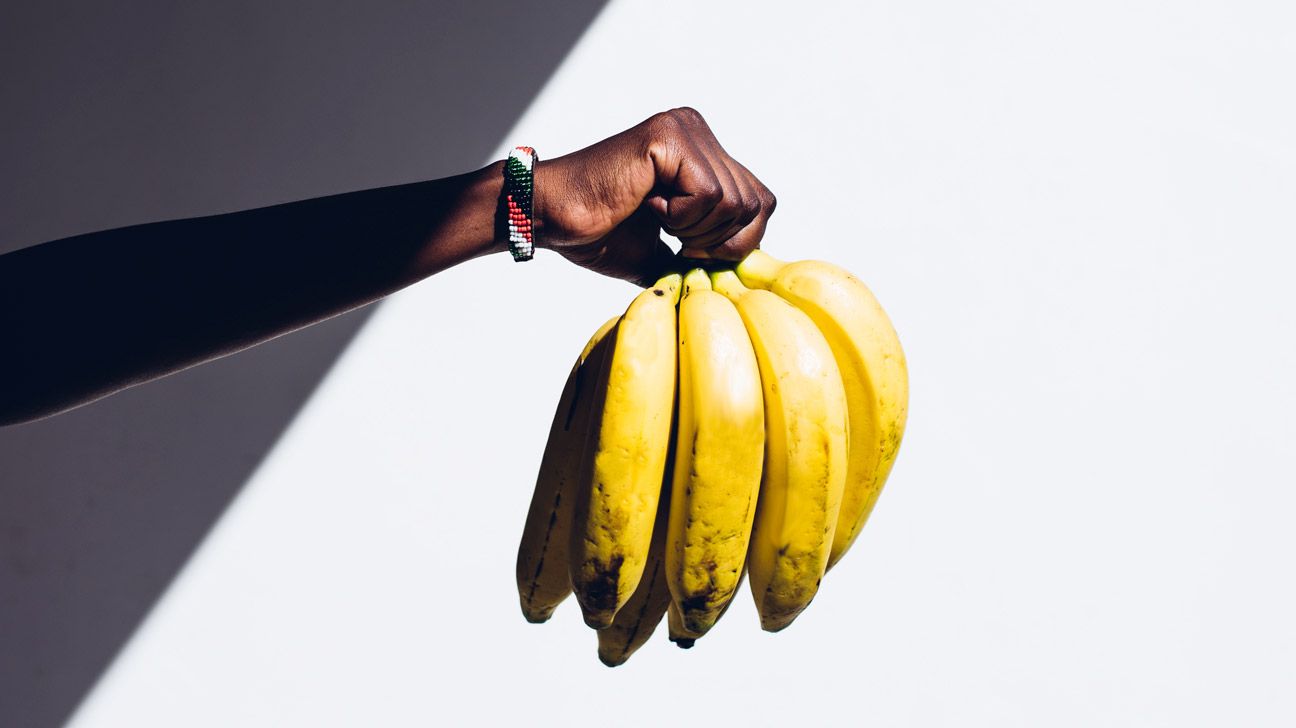If you go by looks alone, it’s fair to wonder exactly what is the difference between plantains and bananas. But though they may look similar — and it’s totally possible to use these two peel-able treats interchangeably in some recipes — plantains aren’t just bananas in different pajamas.
Here’s how to tell these two related (but delightfully unique) fruits apart.
Both plantains and bananas come from plants belonging to the genus musa, a family of heat-loving herbs native to southeast Asia and the south Pacific. (Banana trees, biologically speaking, are not trees, but giant herbs).
And like your average pair of siblings, bananas and plantains are eager to prove how dissimilar they are to one another, despite the fact that they share genes.
Bananas’ and plantains’ individuality really shines in their unique flavors. Bananas are the fun, mellow, and sweet popularity queen — the third-most consumed fruit in the U.S. Plantains, on the other hand, are a bit harder to get to know, showing their sweet side only after they reach ripe old age.
Because of their different levels of starch and sugar, the two fruits also behave quite differently when cooked. Bananas get soft and pudding-like when heated, perfect for an oozy, boozy dessert like bananas foster. Plantains — especially green ones — are dry and dense, turning crispy if you fry them long enough.
We don’t doubt that you know how to spot a banana, but just to clarify: When we’re talking ‘nanners, we mean one specific type of tropical fruit. That’s the Cavendish banana, an easy-to-peel, sweet variety that makes up about 95 percent of all commercially sold bananas.
There are other types of bananas out there, and occasionally you can find varieties such as creamy red bananas or stubby, tart manzanos in stores. But Cavendishes are the ones you’re likely using to top your breakfast cereal or bake into banana bread.
Most Cavendishes are harvested while still underripe and green, then transported from their tropical growing regions to the country where they’ll be sold.
Before reaching store shelves, they undergo an artificial ripening process using ethylene gas that helps them soften, turn yellow, and convert their starches into sugars. Without this step, they’re less likely to achieve that peak of sweet, ripe banana flavor.
For the most part, it’s best to use bananas in desserts or other recipes on the sweeter side. Still, very green, unripe bananas are firm and starchy enough for some savory dishes, and can be used in place of plantains in a pinch. (Think: fried in curries, sliced as salad toppers, or as banana chips.)
Plantain species differ from their banana brethren in that they contain a much higher percentage of starch and less of the sweet stuff. Because of this — we’ll be honest — they’re not particularly pleasant raw.
On the other hand, when cooked, plantains have a heavy, filling, potato-like character to them, which has cemented their status as a staple across Latin America, the Caribbean, and west and central Africa.
Plantains are soft and pillowy in dishes like mofongo, or they can be fried to a crisp and eaten like chips if sliced thinly. When using them in savory recipes, you’ll want to seek out hardy, firm, green plantains, which are generally larger than your average banana.
Ripe plantains (both yellow and black), though still on the starchy and tough side, do have a noticeable sweetness to them, caramelizing nicely when cooked. They can be used in desserts, but are still substantial enough to pair nicely with savory mains.
Try them sautéed alongside beans and roast pork for a Cuban-style feast, or as an unexpected tostada topper.
Need even more fodder for your plantain Pinterest board? Check out this run-down of how to make fried green plantains.
Just like their appearance and cooking uses, plantains and bananas have close (but not identical) features in another area: nutrition. Both have plenty of micronutrients, almost no fat, and just a hint of protein. Bananas offer a bit more fiber, fewer carbs, and a lower calorie count, while plantains contain more potassium and vitamin C.
Here’s what you can expect nutritionally from 100 grams (about 1/2 cup) of the two fruits:
| Plantains | Bananas | |
| Calories | 122 | 89 |
| Carbs | 32 g | 23 g |
| Fiber | 2 g | 3 g |
| Protein | 0.35 g | 1 g |
| Potassium | 487 mg | 358 mg |
| Magnesium | 36 mg | 27 mg |
| Vitamin C | 18 mg | 9 mg |
At first glance, bananas and plantains have plenty of overlapping qualities. But just because they’re long, yellow, and peel-able doesn’t mean they’re total twinsies. Each fruit has its own unique flavor, texture, cooking methods, and nutrition profile.
The more you cook with them, the more you’ll get to know their properties — and will find that comparing bananas and plantains isn’t apples to oranges.

